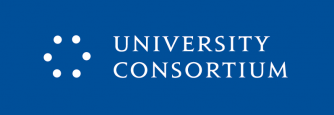Russia’s Foreign Policy: How to Explain the Mismatch?
Irina Busygina, HSE Sant Petersburg
The principle mismatch which amazes scholars who analyse Russian foreign policy (or some of them, at least) is the mismatch between assessments of Russia’s diverse and very active external actions both inside the country and abroad. For Russia’s domestic audience there is no doubt about the “greatness” of the country, which makes it an indispensable player in international politics and deserves recognition by other major powers. However, many observers abroad consider Russia to be something of a second-rate great power. Russia’s annexation of Crimea in 2013 and its involvement into political conflict with Ukraine did not change outside observer’s minds about their assessment. These actions led to the country being perceived as a revisionist power and breaker of international norms.
It was this mismatch in perceptions which I had planned to discuss with students during my classes in the University Consortium Training Module in Oxford in June 2019. It was an ambitious task, since the “product” that is created during intensive joint work will only be of high quality if the students are bright and participate eagerly in discussions. I was positively surprise by the brightness of all the students, their wide knowledge, and their creativity. I must confess that I also got the opportunity to expand my own research perspective – by including a constructivist paradigm. Our discussions with lecturers and students during the Module have convinced me (for the first time in my professional life!) of its utility.
Indeed, many would agree that since 2008 it has becomes increasingly difficult to predict and rationalize the moves of the Russian government in its international affairs. There are structural factors that contribute to such difficulties. First, enormous territorial size and a long border with many neighbors imply that Russia (unlike smaller countries) is forced to deal with variety of both old and newly emerging foreign policy issues in the Eurasian region and elsewhere. Second, vast natural resources, relatively large population size, and the size of its economy allow Russia to play a major role not only in the Eurasian region but in global affairs as well. Additionally, Russia remains a key player in the most important international organizations. Thus, we would expect Russia be willing and capable of engaging in multiple problem spots around the world – from Syria to Venezuela and from Africa to the Arctic.
Thus, due to structural factors, Russian foreign policy is necessarily multi-vector and multi-layered; it has many goals of a fundamentally contradicting nature – some are short-term and pragmatic, others are long-term and strategic. Analytically, one could view Russian foreign policy as a combination of “nested games” played out at different but inter-connected levels. From this perspective, decision-makers would seek a balance between differences in priorities and agendas at different levels. In other words, Russia faces the extremely difficult task of balancing all these multiple objectives under conditions in which time and resources are always limited.
Most scholars make the assumption that there is (or should be) some priority objective which could be used to explain most major decisions which the Kremlin makes. Arguably, the most popular approach to this is to derive these priority objective from various modifications of the “realist” perspective in IR theory. This means that Moscow is driven primarily by security concerns; viewed from such a perspective, the actions against Georgia and Ukraine could be aimed at preventing NATO expansion. Others assume that geopolitical expansion is most important for Kremlin. Perhaps the Russian leaders and people are nostalgic for the former glory of the Soviet Union, and Putin might therefore seek to create a new version of the Soviet Union in Eurasia.
However, it is quite challenging to outline and rationalize a possible strategy that could explain recent developments in Russian foreign policy assuming the existence of a clear priority objective or even a stable hierarchy of objectives. Those willing to engage in such exercises have to admit that there are too many inconsistencies to for there to be a rational strategy.
Since 2014, the inconsistency between Russia’s regional (post-Soviet) and global agendas has become apparent. The Crimea crisis could be interpreted as an open challenge by Russia of the rules of the prevailing international system, but it has also turned out to be destructive for the Russian agenda within the rest of the post-Soviet space. Thus, what is really puzzling about Russian foreign policy (and very much deserves further exploration) is the positioning of Russia in various scales: regional, macro-regional (Eurasian), and global, and their compatibility and (in)consistency, as well as (and at the same time) Russian positioning with regards to its main neighbors, China and the European Union.



